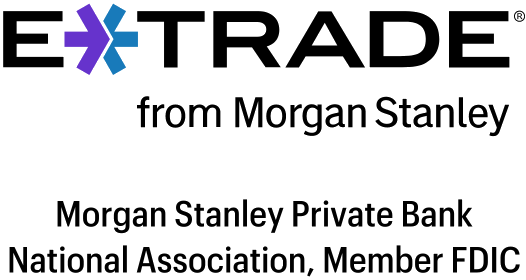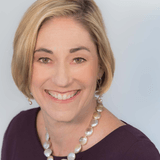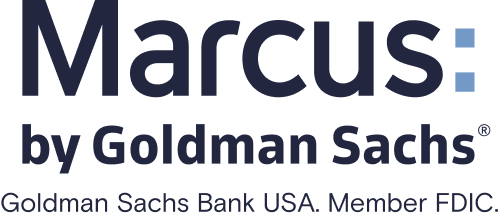What the Fed Rate Cut Means for High-Yield Savings Accounts
With a drop in the federal funds rate, the target range is now between 3.50% and 3.75%. Savers will likely see their rates dip.

Many, or all, of the products featured on this page are from our advertising partners who compensate us when you take certain actions on our website or click to take an action on their website. However, this does not influence our evaluations. Our opinions are our own. Here is a list of our partners and here's how we make money.
Federal Reserve officials completed a two-day meeting on Dec. 10 and announced a federal funds rate decrease of 25 basis points. This is the third rate cut of 2025. The target range is now between 3.50% and 3.75%. With today’s cut, savers probably won’t see large rate swings, but decreases are likely.
The Fed lowered its benchmark interest rate three times in 2025. Excellent rates are still available on savings accounts, but they are trending lower.
Will high-yield savings rates go down?
Yes, it is likely that banks will change the interest rate on many of their savings accounts. In fact, over the last few months, some of the best high-yield savings accounts had small APY dips. The yields on these accounts are still much higher than average, and will likely continue to be higher than the competition. But with the Dec. 10 announcement, we expect to see more rate decreases.
» Learn more: What the Fed rate decision means for CDs
Forbright Bank Growth Savings

4.00%
$0

Member FDIC
Varo Savings Account

5.00%
$0
E*TRADE Premium Savings

3.50%
$0
What is the federal funds rate?
The federal funds rate, or the “Fed rate,” is the interest rate that banks charge each other to borrow money overnight. According to the Federal Reserve, institutions borrow money and lend from their reserves after hours in order to meet regulatory requirements and to be ready to manage market conditions.
The funds rate is set by the Federal Open Market Committee, which the Federal Reserve uses to help adjust monetary policy based on economic conditions. For example, raising rates can help ease inflation: A higher federal funds rate generally leads to higher rates for loans or credit cards. This means households may be less willing to borrow money, which could lead to less spending and result in lower prices and less inflation.
When inflation is at or near desired levels, however, lowering rates can encourage more borrowing and spending.

When is the next Fed meeting?
Does the Fed rate affect FDIC insurance?
The federal funds rate is a separate subject from federal insurance, which allows bank customers to access their deposits in the event of a bank failure. Some accounts at banks, such as savings accounts, are typically federally insured by the Federal Deposit Insurance Corp., up to $250,000 per depositor, per ownership category (joint owners or a single owner, for example), per insured bank. If a bank fails, depositors can still access their money, up to the insured amounts.
If earning higher rates in your savings account means your balance will go above federal insurance limits, consider one of these strategies for protecting your money if you’re banking over $250,000.
» Want to dig deeper? Read more about FDIC insurance at banks and NCUA insurance at credit unions
Maximize your savings by choosing a high-yield account
Any time there’s a Fed rate announcement, it’s a good idea to check the interest rate on your savings accounts and shop around to see if there are better options. Not every bank offers strong rates. Some consistently offer a low APY of around 0.01%, and the national average savings account rate is only 0.39%, according to the FDIC.
But online savings accounts tend to offer better rates — many times higher than that average — because institutions that offer these accounts don't have to operate expensive brick-and-mortar branches and can pass the savings on to customers in the form of higher rates and low (or no) fees.
Do high-yield savings account rates change often?
High-yield savings account rates are variable and can change at any time. This is true for accounts with any kind of rate — whether it's low or average or high. Within the last few months, we've seen some financial institutions with HYSAs lower their rates slightly, even when there was no change to the federal funds target. But HYSAs still consistently outperform their competition. A higher APY can make a visible contribution to your bank balance. Say you have $10,000 in a savings account that earns a low 0.01% APY, which is typical for large banks. After a year, that balance would earn only about a dollar in interest. But put that amount in a high-yield savings account that earns a 4% APY, and it would earn a little more than $400 after a year. That interest would also earn interest over time, a feature known as compound interest. High-yield savings accounts may not make you rich, but you’ll automatically earn much more than you would with a lower rate option.
» Want to learn more about how APY changes are measured? Read our primer on basis points
Use a savings calculator to determine what your bank balance can be with different APYs and see how your money could grow.
See how APYs have moved at high-yield accounts versus regular accounts
December 2025 | November 2025 | October 2025 | September 2025 | August 2025 | July 2025 | June 2025 | May 2025 | April 2025 | March 2025 | February 2025 | January 2025 | December 2024 | November 2024 | October 2024 | September 2024 | August 2024 | July 2024 | June 2024 | May 2024 | April 2024 | March 2024 | February 2024 | January 2024 | December 2023 | November 2023 | October 2023 | September 2023 | August 2023 | July 2023 | June 2023 | May 2023 | April 2023 | March 2023 | February 2023 | January 2023 | December 2022 | November 2022 | October 2022 | September 2022 | August 2022 | July 2022 | June 2022 | May 2022 | |
|---|---|---|---|---|---|---|---|---|---|---|---|---|---|---|---|---|---|---|---|---|---|---|---|---|---|---|---|---|---|---|---|---|---|---|---|---|---|---|---|---|---|---|---|---|
Online institutions | ||||||||||||||||||||||||||||||||||||||||||||
Ally, Member FDIC. | 3.30% APY. | 3.30% APY. | 3.40% APY. | 3.50% APY. | 3.50% APY. | 3.50% APY. | 3.60% APY. | 3.60% APY. | 3.60% APY. | 3.70% APY. | 3.80% APY. | 3.80% APY. | 3.85% APY. | 4.00% APY. | 4.00% APY. | 4.20% APY. | 4.20% APY. | 4.20% APY. | 4.20% APY. | 4.20% APY. | 4.25% APY. | 4.35% APY. | 4.35% APY. | 4.35% APY. | 4.25% APY. | 4.25% APY. | 4.25% APY. | 4.25% APY. | 4.25% APY. | 4.00% APY. | 3.85% APY. | 3.75% APY. | 3.75% APY. | 3.40% APY. | 3.40% APY. | 3.30% APY. | 3.30% APY. | 3.00% APY. | 2.35% APY. | 1.85% APY. | 1.85% APY. | 1.25% APY. | 1.00% APY. | 0.60% APY. |
CIT Bank, Member FDIC. | 3.75% APY. | 3.85% APY. | 3.85% APY. | 4.00% APY. | 4.00% APY. | 4.00% APY. | 4.10% APY. | 4.10% APY. | 4.10% APY. | 4.30% APY. | 4.30% APY. | 4.35% APY. | 4.55% APY. | 4.70% APY. | 4.70% APY. | 4.85% APY. | 5.00% APY. | 5.00% APY. | 5.00% APY. | 5.05% APY. | 5.05% APY. | 5.05% APY. | 5.05% APY. | 5.05% APY. | 5.05% APY. | 5.05% APY. | 5.05% APY. | 5.05% APY. | 5.05% APY. | 4.95% APY. | 4.85% APY. | 4.75% APY. | 4.50% APY. | 4.05% APY. | 4.05% APY. | 4.05% APY. | 3.85% APY. | 3.60% APY. | 3.00% APY. | 2.10% APY. | 2.10% APY. | 1.90% APY. | 1.20% APY. | 0.90% APY. |
National brick-and-mortar banks | ||||||||||||||||||||||||||||||||||||||||||||
Bank of America, Member FDIC. | 0.01% APY. | 0.01% APY. | 0.01% APY. | 0.01% APY. | 0.01% APY. | 0.01% APY. | 0.01% APY. | 0.01% APY. | 0.01% APY. | 0.01% APY. | 0.01% APY. | 0.01% APY. | 0.01% APY. | 0.01% APY. | 0.01% APY. | 0.01% APY. | 0.01% APY. | 0.01% APY. | 0.01% APY. | 0.01% APY. | 0.01% APY. | 0.01% APY. | 0.01% APY. | 0.01% APY. | 0.01% APY. | 0.01% APY. | 0.01% APY. | 0.01% APY. | 0.01% APY. | 0.01% APY. | 0.01% APY. | 0.01% APY. | 0.01% APY. | 0.01% APY. | 0.01% APY. | 0.01% APY. | 0.01% APY. | 0.01% APY. | 0.01% APY. | 0.01% APY. | 0.01% APY. | 0.01% APY. | 0.01% APY. | 0.01% APY. |
Chase Bank, Member FDIC. | 0.01% APY. | 0.01% APY. | 0.01% APY. | 0.01% APY. | 0.01% APY. | 0.01% APY. | 0.01% APY. | 0.01% APY. | 0.01% APY. | 0.01% APY. | 0.01% APY. | 0.01% APY. | 0.01% APY. | 0.01% APY. | 0.01% APY. | 0.01% APY. | 0.01% APY. | 0.01% APY. | 0.01% APY. | 0.01% APY. | 0.01% APY. | 0.01% APY. | 0.01% APY. | 0.01% APY. | 0.01% APY. | 0.01% APY. | 0.01% APY. | 0.01% APY. | 0.01% APY. | 0.01% APY. | 0.01% APY. | 0.01% APY. | 0.01% APY. | 0.01% APY. | 0.01% APY. | 0.01% APY. | 0.01% APY. | 0.01% APY. | 0.01% APY. | 0.01% APY. | 0.01% APY. | 0.01% APY. | 0.01% APY. | 0.01% APY. |
With inflation, why put money in any savings account?
Inflation erodes spending power, since it means goods and services are more expensive than they were previously. So when the inflation rate is considerably higher than the average national savings account rate — as it was for more than two years — it may seem that parking money in a savings account isn’t beneficial.
But the larger reason for saving cash is to have easy access to money in case you need it quickly, say, for an unexpected car repair expense. Setting aside funds for financial emergencies can help prevent you from going into debt, which can be costly, especially when interest rates rise.
Having at least three to six months’ worth of expenses tucked away in an emergency savings fund is ideal, but anything you can put away would help, and it adds up. For example, if you put $10 a week into savings and don’t have to dip into the funds, it’ll add up to more than $500 after a year. And having that money earn interest is a bonus way to have your dollars work for you.
If you have a fully funded emergency savings account, and you have extra cash that you don’t need to access right away, it may be worth looking at other short-term options to grow your money. Some certificates of deposit, for example, earn a better yield than even the best savings accounts. This is the case even though many of the best CD rates today are lower than they were at the beginning of last year. With a CD, you will need to leave the money parked in the account for a predetermined time period — a year or more, for example. For longer-term goals, such as retirement, it makes sense to look into investing.
The federal funds rate is worth paying attention to. When the Fed rate decreases, savings rates are likely to fall as well. But if you put your cash in a high-yield account, your money can still work hard for you and your savings balance can continue to grow.
















